The smallest objects often provide the most information. Coins and seals are invaluable to the art historian, as well as having an aesthetic dimension of their own. Up to the modern age, coins throughout the Islamic world shared a certain identity. They were highly calligraphic, usually with religious inscriptions and details of rulers. Pictorial images have been avoided since early in the development of Islam, although exceptions do exist. As an empire with a keen interest in trade, coins of the Caliphate were distributed around the world. They were imitated as far away as Anglo-Saxon England, and discoveries of Umayyad and Abbasid coin hoards happen regularly in Sweden and Russia. The study of seals is not as advanced as that of coins, although a lot of work is currently being put into the subject.

Initially, Islamic coins maintained the basic appearance of the Byzantine and Sasanian denominations already in circulation. Crosses on the Byzantine denarius were the first motif to be dispensed with. Portraiture, however, was maintained for a few decades. Under the reign of the Umayyad Caliph Abd al-Malik (685-705), radical changes took place. Towards the end of the 7th century, he reformed the coinage and removed all images. From this point onwards, a distinctively Islamic look emerged. The focal point became the proclamation of faith and verses from the Qur’an.
Such was the power of the original Umayyad designs, they remained unchanged for centuries. The Abbasids altered little more than the script, and even the Fatimids resisted the temptation to add the figural motifs that they relished elsewhere, although they did include some Shi’a messages. Further east in the Islamic world, calligraphic inscriptions prevailed. Occasionally, animal and human figures appeared, especially on the coins of the Seljuk and Urtuqid dynasties. The Safavids brought their own distinctive stamp to Iranian mints by adding couplets of poetry in Persian.
By the 19th century, coinage of the Islamic world had begun to acquire an ‘international’ outlook. Gone were the proclamations of faith and irregular hand-struck shapes that had previously been favoured. Coins with milled edges made by machines exist for the sake of uniformity and to prevent counterfeiting. This was the direction in which all countries headed during the 19th and 20th centuries, although independent nations like Ottoman Turkey held on to symbols such as the Tughra, the imperial signature of the sultans.
The IAMM has a wide-ranging collection of seals that date back many centuries. Pre-Islamic seals go back a few millennia earlier. Throughout Islam, these were used for either personal or official purposes and frequently contain religious inscriptions. The most common materials are jade, agate, chalcedony and carnelian. Metal was also used extensively. Seal-like objects that are not carved in reverse were used as amulets. Seals, like coins, can be admired as intricate works of art in miniature whilst sometimes offering a glimpse into the past, especially when they have a date inscribed.

The collection of coins are linked to major Muslim dynasties that reflect not only the universal need for currency and economic transaction but represent a testament to accounts and events, as well as the intricately knit layers of sovereignty and identity in Islamic societies.
Coins were also often served as effective tools in circulating religious and political messages, almost every Muslim ruler had found it necessary to issue coins in their names upon coming to power, which would then be minted, regulated and spread through commercial trails.
Throughout the Islamic world, seals were used for either personal or official purposes and frequently contain religious inscriptions. The most common materials are jade, agate, chalcedony and carnelian. Metal was also used extensively. Seal-like objects that are not carved in reverse were used as amulets.
Seals, like coins, can be admired as intricate works of art in miniature whilst sometimes offering a glimpse into the past, especially when they have a date inscribed.














